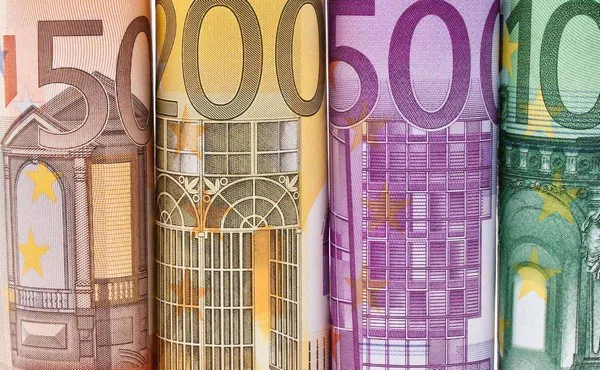In today’s global economy, understanding the value of different currencies and their exchange rates is crucial for both individuals and businesses. Converting 10,000 British Pounds (GBP) to Indian Rupees (INR) involves not just a simple mathematical calculation, but also an understanding of various economic, political, and financial factors that influence exchange rates. This article delves deep into the intricacies of currency conversion, factors affecting exchange rates, forecasts, financial advice, and the broader economic implications.
Current Exchange Rate
The exchange rate between the British Pound and the Indian Rupee fluctuates regularly due to various factors. As of the most recent data, 1 GBP is approximately equal to 106 INR. Therefore, converting 10,000 GBP to INR would give us:
10,000GBP×106INR/GBP=1,060,000INR
However, this rate is subject to change, and it is essential to check the latest exchange rates from reliable financial news sources or currency conversion tools for the most accurate figure.
Factors Influencing Exchange Rates
Several factors influence exchange rates between the British Pound and the Indian Rupee:
Economic Indicators: Inflation rates, interest rates, and economic growth indicators play a significant role. For instance, higher inflation in the UK relative to India may devalue the Pound against the Rupee.
Political Stability: Political events, government policies, and stability in the UK and India can affect investor confidence and currency value.
Market Speculation: Traders’ perceptions and speculations about future economic performance can lead to fluctuations in exchange rates.
Trade Balances: The balance of trade between the two countries affects currency demand. A trade deficit in the UK might weaken the Pound against the Rupee.
Central Bank Actions: Decisions by the Bank of England and the Reserve Bank of India regarding interest rates and monetary policy directly impact currency values.
Global Economic Conditions: Global economic trends, such as oil prices and geopolitical events, also influence exchange rates.
See Also:50,000 Pounds in Australian Dollars
Forecast and Trends
Predicting future exchange rates is complex, involving analysis of multiple economic indicators and trends. Historically, the GBP/INR exchange rate has seen significant volatility. Analysts consider factors like Brexit, UK’s economic policies, and India’s economic growth trajectory to forecast future rates.
Currently, if the UK economy strengthens post-Brexit and India’s growth continues at a robust pace, we might see the exchange rate stabilizing or even appreciating. Conversely, any economic downturns in either country can lead to depreciation.
Financial Advice
When converting large sums of money, such as 10,000 GBP to INR, it is prudent to:
Monitor Exchange Rates: Keep an eye on the exchange rates and try to convert your money when the rate is most favorable.
Use Reputable Exchange Services: Banks and certified exchange services offer better security and sometimes better rates compared to less regulated platforms.
Consider Forward Contracts: If you are planning a future transaction, a forward contract can lock in the current exchange rate, protecting you from adverse movements.
Diversify: If you regularly deal with multiple currencies, diversifying your currency holdings can reduce risk.
Legal and Tax Implications
When converting currencies, especially large amounts, there are legal and tax considerations:
Tax on Currency Gains: In many jurisdictions, any gains made from currency exchange can be subject to capital gains tax.
Reporting Requirements: Ensure compliance with any reporting requirements for large currency transactions to avoid legal issues.
Anti-Money Laundering (AML) Laws: Transactions may be scrutinized under AML laws, so be prepared to provide documentation proving the legitimacy of your funds.
See Also:60 Pounds in Australian Dollars
Economic Indicators
Several economic indicators impact the GBP/INR exchange rate:
GDP Growth Rates: Higher GDP growth rates in India compared to the UK can strengthen the Rupee.
Inflation Rates: Lower inflation in India relative to the UK can increase the Rupee’s value against the Pound.
Interest Rates: Higher interest rates in India can attract foreign capital, boosting the Rupee.
Employment Data: Positive employment data from either country can lead to currency appreciation due to increased investor confidence.
Trade Data: A favorable trade balance in India can strengthen the Rupee, while a trade deficit in the UK can weaken the Pound.
Global Market Impact
The GBP/INR exchange rate is also influenced by global market trends:
Commodity Prices: As major importers and exporters of commodities, changes in global commodity prices (e.g., oil) impact the exchange rates.
Global Financial Markets: Movements in global financial markets, such as stock exchanges, can affect investor sentiment and currency values.
Geopolitical Events: Events such as trade wars, sanctions, and geopolitical conflicts can cause volatility in exchange rates.
Conclusion
Converting 10,000 British Pounds to Indian Rupees involves more than just a simple calculation. It requires understanding the dynamic nature of exchange rates influenced by various economic, political, and global factors. By staying informed about these factors and seeking professional financial advice, individuals and businesses can make informed decisions and potentially benefit from favorable exchange rates. As the global economy continues to evolve, so too will the factors influencing currency values, making continuous monitoring and analysis essential.
Related Topics:


























